How I became a Calendar Girl
Angela Knowles shares the story of how she joined with her friends to raise £6 million (and counting) for blood cancer research. This year marks the Calendar Girls 25th anniversary of their incredible tale.
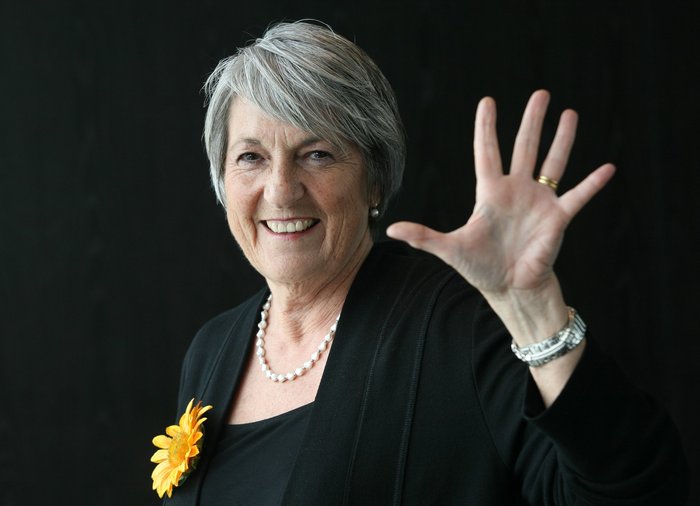
How I became a Calendar Girl
My late husband John was diagnosed with non-Hodgkin lymphoma in February 1998. It was a terrible shock – John had never had a day’s illness in his life.
We coped by focusing on short term-goals. Georgina, our daughter-in-law, suggested we give everyone we knew a sunflower plant to grow in the hope that when the flowers bloomed John would be in remission. But tragically, after only five months' illness, he died at the age of 54 on 22 July 1998, before the sunflowers were in bloom.
I remember one evening sitting around with the Women’s Institute girls, before John even became ill, joking about the possibility of doing our own Pirelli-style nude calendar.
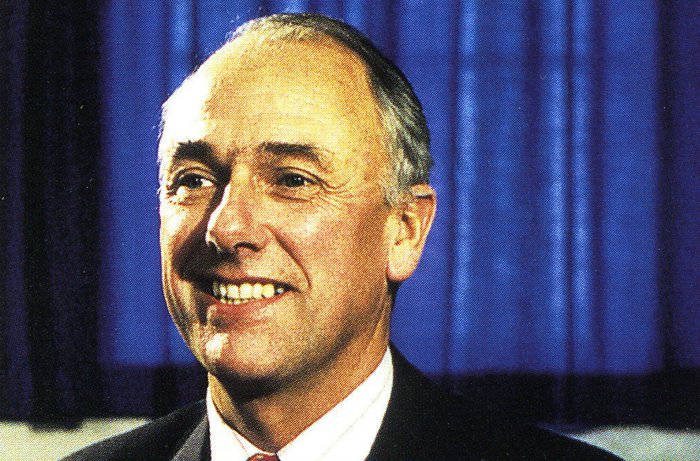
John was treated in Airedale Hospital by Ann Cuthbert – in the end they couldn’t do any more for him. John wanted any chance that he had, so he went to Leeds where he was treated by Graham Smith, Sister Rose and a group of amazing nurses. John at this stage was too poorly to have too many visitors so it was mainly family who came, but my close friends Tricia and Lynda were fantastic.
He had one good night at home. He wanted a steak and a pint and because of the problems of cleanliness we took one of our glasses down to the pub to be filled for him. Tricia had decided to resurrect the calendar idea, partly to raise money for Blood Cancer UK (Leukaemia & Lymphoma Research as it was then) and partly to entertain John, and it was that night when he and the girls really talked about it and which month they should be. John said: “It’s a fantastic idea but you’re all talk, you’ll never do it”.

The calendar
A company called Bermuda printed the calendar (and has done ever since). We wanted to print 1,000 and sell them for £5 each to make £5,000, but the printer said it wasn’t worth printing less than 5,000. Tricia said we could pulp them in to briquettes to put on the barbecue if they didn’t sell!
One afternoon, shortly after he died, Tricia appeared at my door with a clipboard. "Are we going to do this calendar or not?" she said. "Even if we don’t sell any, at least we’ll have tried to do something."
Terry Logan took wonderful photographs of us all and included a sunflower on each picture as an emblem of the Calendar Girls. When I saw the calendar for the first time, I cried. It was the first time that I thought it was going to sell. Four of us went to the Women's Institute HQ (where we were surprised not to be served tea and cakes), to show them the calendar. We'd deliberately put the word 'Alternative' on the front in case WI didn’t like it – but, unlike in the later film, they loved it.
25 years of the Calendar Girls
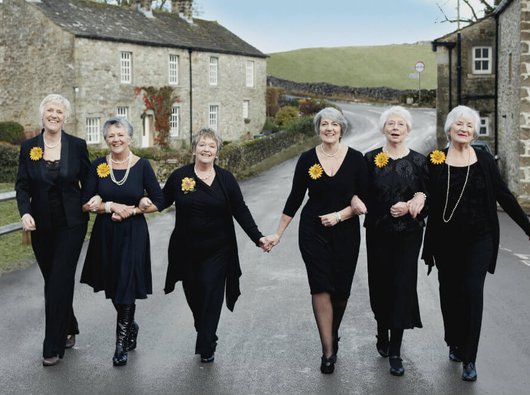
The launch
The calendar first became available on 12 April 1999. That month, we had a small press launch for the calendar at the local pub. We thought it'd just be a small family occasion so had just arranged to have a few bottles of wine and some nibbles there. We broke our own press embargo (we didn't know what one was in those days!) and heard Terry Wogan talking about it ahead of the launch. So when we arrived at the pub it was mayhem: there were vans and satellite dishes everywhere – we couldn't get in!
Our story was all over the news and the initial run of calendars we'd had printed were snapped up. So we reprinted and reprinted: the pub eventually shipped 56,000 calendars, putting on extra shifts and not charging a penny!
By October, they couldn't keep up with demand so the Post Office helped. We were receiving about 400 letters a day and we couldn’t have done any of it without Roy the postman! It was so wonderful to see people like Roy recognised for the part they played in the calendar's success: he was invited to a lunch at Clarence House with Prince Charles and Camilla – his first time out of Yorkshire.
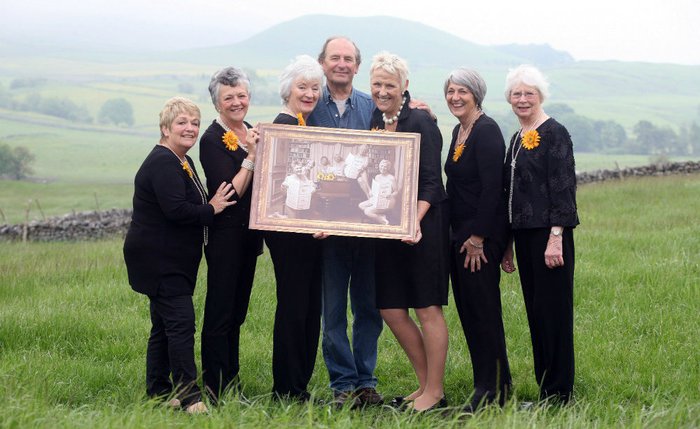
Our long history with Blood Cancer UK
Then there was the question of what to do with the money we'd raised. Some of the girls had already climbed the Three Peaks in memory of John, and had asked Ann Cuthbert at Airedale Hospital where the money should go. She recommended Blood Cancer UK. So we presented a cheque for £322,000 to the charity and thought that was it. But as everyone knows, it wasn't!
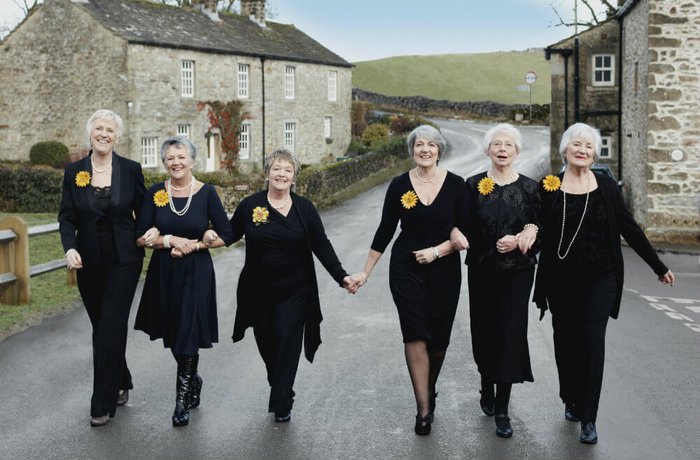
The USA, the film and the musical!
We went to places and met people I never thought we would: we met Michael Palin, appeared at the Royal Variety Performance and met Prince Charles, and personally delivered calendars to the Queen and Queen Mother – and received personal thank-yous!
We promoted the calendar in the US, sold calendars at the Rockefeller Centre in New York, went on the Barbara Walters show and to the LA Bookfair, and in January 2000 were on the front cover of the New York Times.
It was then that Hollywood came calling and the Calendar Girls film was made. In total it took four-and-a-half years to make, on a very small budget. Richard Branson flew us first class to open the LA Film Festival. We didn't plan to meet the actresses in the film because they needed the film characters to develop independently of us. But one day Julie Walters (who played me) called, we met, and it was like we'd known each other forever.
It ended up grossing $20 million. It was followed by an internationally acclaimed stage show, not to mention all the merchandise – all of which Blood Cancer UK benefitted from.
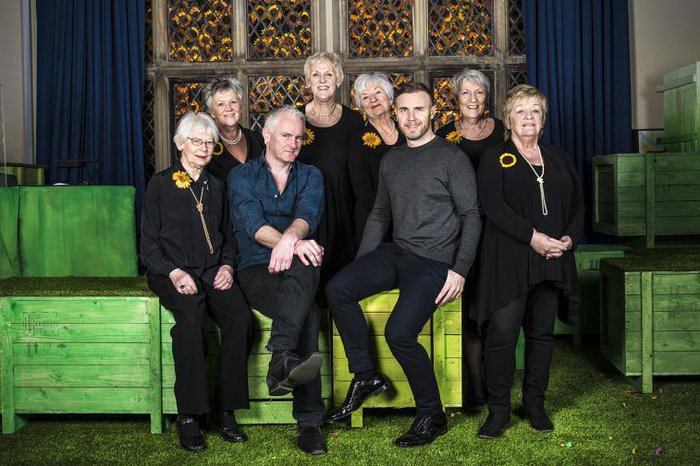
The calendar's legacy
I’m just so delighted that this story, which is so dear to my heart, has raised so much money for Blood Cancer UK. We did the calendar because we wanted to raise money in John’s memory and to support research into better treatments for those with lymphoma. Out of the tragedy of John’s death has come something very special. Everything we do is born of love for him. We've met so many wonderful people – and raised over £5 million for Blood Cancer UK to help beat blood cancer.
And now there's a musical! I loved The Full Monty musical and saw it on Broadway. I'm dreaming of the same for The Girls...
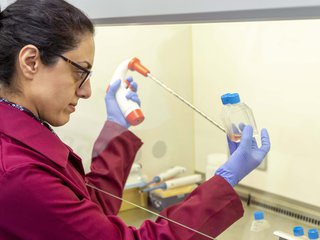
Because research will beat blood cancer
Over 60 years, we've invested more than £500 million in blood cancer research which has led to a long line of breakthroughs that have improved treatments and saved lives.
